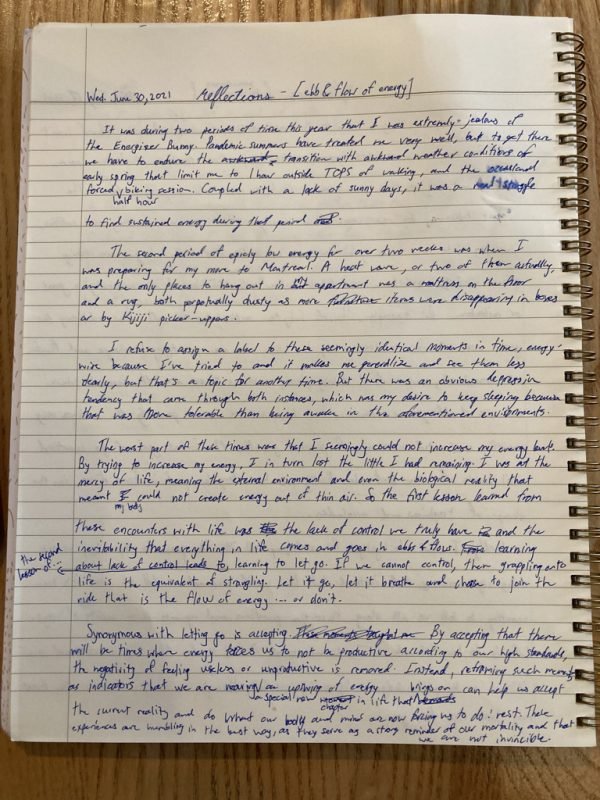A good friend of mine and I were sipping on some Japanese flash-iced pour over coffee on my balcony in Ottawa, which happened to be the last coffee I made and my last balcony hang in the city. As balcony hangs in Ottawa have intiated many times, a neat concept was born during our conversation: spiritual literacy.
The context is that he just went through a pretty deep rough patch contemplating switching jobs and other personal challenges that ultimately led him to pray quite a bit, as devout Christians such as himself tend to resort to during difficult times. He mentioned that his spirituality, his closeness to God, became stronger in this darkness, which resonated with me completely.
Our spirituality often becomes stronger as we enter the darkness periodically, thrusted into an opportunity to examine aspects of our life that we’ve intentionally ignored or haven’t prioritized due to its perceived lack of importance. In the darkness, it is difficult to find the light if we are operating from fear, but the light is always there.
Light does not imply feeling good, or pleasurable senses, or positive emotions such as happiness. Light is equal to clarity, awareness, feeling awake or alive. Light can co-exist with so called negative emotions. Even though it may be difficult to find initially, once we compose ourselves and accept the darkness we are in, our mind stops spinning and a glimmer light stands out quite obviously against the dark backdrop.
For many, light looks like prayer during dire times. I see prayer as speaking to God or a higher force, whereas meditation is a practice of listening to the higher force. My friend defaulted to prayer, which he’s very familiar with, and so the more he prayed the stronger he felt his spirituality became. Similarly, when we have a friend that knows how to listen when we just need to talk it out, we feel connected to this person despite them not having said a word.
For some others, however, meditation is practicecd much more frequently when we are most desperate for a sign or a sense of direction in the darkness. My friend, after describing his spiritual growth, asked how it’s possible to be as dedicated to spiritual practice when we are not steeped in darkness and instead life is simply great.
Learning about education in the Tibetan culture when reading the Tibetan Book of Living and Dying, I remembered that Tibetan children’s education came from monasteries. They become literate in spirituality and emotions first and foremost, similar to the youth in the Western world learning numerical and digital literacy beore anything else, culutrally speaking.
While reading the first chapter of the textbook, it became evident to me that Tibetans are very literate, familiar, competent in how to navigate oneself in times of darkness, but more impressively in times of light as well. Their culture teaches them a variety of spiritual modalities and through practice they learn when to use which modality. Ultimately, their life is spirituality.
This is why someone from the West, such as myself, has to study practices and wisdom from various traditions and lineages, such as Tibetan Buddhism, in order to have an actionable response to my friend’s question. I’ve learned about what deep gratitude for reality as it is and compassion for others look like and ways to integrate them into my daily life, but I had to become spiritually literate in order to maintain spiritual health in times of bliss.
In Tibet, however, it seems common to nto rely on tough times to strengthen one’s spiritual life or connection with the higher power. Tibetans are able to genuinely and deeply appreciate and be grateful for all the fortune they are in the middle of, such that their spiritual strength becomes great enough for them to curb negative states of mind.

